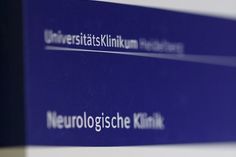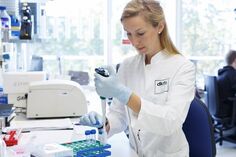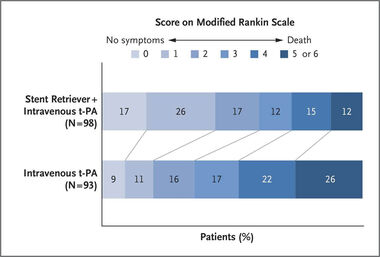Focus on vascular neurology
The Heidelberg Stroke Unit is one of the largest units for the treatment of acute strokes in Europe. In 2022, >1,600 patients with acute stroke were treated here and in the neurological intensive care unit. We place particular emphasis on recanalising acute treatments (e.g. systemic thrombolysis). systemic thrombolysis and the endovascular stroke therapy together with the team from the Department of Neuroradiology), which we also offer as a supra-regional centre in a teleneurological network. We are also developing these therapies further in clinical trials.
STRATEGY
The aim of the Vascular Neurology Centre is to combine interdisciplinary patient care at the highest level with innovative clinical studies and comprehensive teaching. The core tasks in the area of patient care are mainly carried out by the Stroke Unit (Neuro 5), in close cooperation with the teams of the emergency outpatient department, the intensive care unit, the neurovascular outpatient department and the teleneurological network as well as the departments of neuroradiology, neurosurgery, vascular surgery, cardiology and angiology. The scientific activities of the focus area concentrate on the planning and implementation of multi-centre studies on acute care and prevention of stroke and health services research.
Goals
- Further development of a supra-regional network that enables high-quality and efficient patient care and endovascular stroke therapy for all patients in the Rhine-Neckar region and neighbouring regions(FAST)
- Increased recruitment of patients in clinical trials to enable access to new treatment concepts
- Initiation and coordination of innovative clinical trial concepts
- Participation in national and international committees (Arbeitsgemeinschaft Schlaganfallstationen Baden-Württemberg (ASBW), German Stroke Society, European Stroke Organisation) and leadership in the development of guidelines
Goals
Following the widespread establishment of systemic thrombolysis, the next milestone was the introduction of endovascular stroke treatment. This treatment concept also offers severely affected stroke patients the chance of a good prognosis for the first time. At the Department of Neurology in Heidelberg, the medically, organisationally and logistically complex thrombectomy treatment is carried out on an interdisciplinary basis by the Emergency Outpatient Department of the Department of Neurology, the Section for Interventional Neuroradiology(Prof. Dr. M. Möhlenbruch) in the Department of Neuroradiology(Prof. Dr. M. Bendszus) and the Neurological Intensive Care Unit. We are one of the few centres in Baden-Württemberg to offer this treatment around the clock, even for several patients in parallel, thus ensuring the highest quality of stroke care far beyond the Rhine-Neckar region.
The number of endovascular stroke treatments has been increasing for years. In 2022, of 1,369 inpatients with acute ischaemic stroke, 651 patients (47.6%) were treated with recanalisation measures, 185 patients with systemic thrombolysis, 261 patients with endovascular stroke therapy (thrombectomy) and 205 with a combination of both procedures. This number rose even further in 2023. This means that the Heidelberg Stroke Unit has an outstandingly high proportion of thrombolyses and thrombectomies compared to 14% in the entire state of Baden-Württemberg. This is certainly also due to good networking with neighbouring clinics. In the region, the Stroke Consortium Rhine Neckar (FAST) was set up with start-up funding from the Dietmar Hopp Foundation. FAST aims to provide the best possible care for stroke patients in the region through common standard operating procedures (SOPs), uniform IT structures and logistics as well as structured further and advanced training and a central coordination centre. The aim is to achieve a measurable improvement in the care of stroke patients in the Rhine-Neckar region with a reduction in death and disability through more frequent and faster adequate treatment.
Details can be found on the pages of the Vascular Neurology Section.







